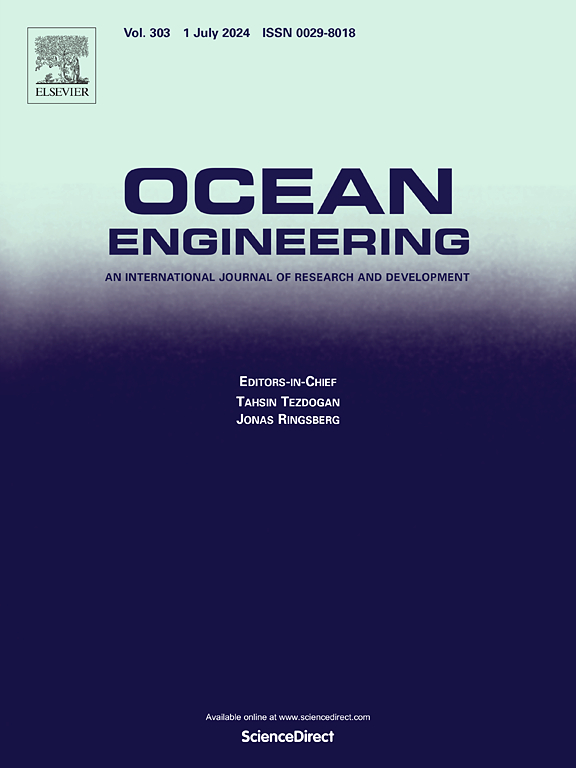与表面波相互作用的超大型浮动结构下的速度场测量
IF 4.6
2区 工程技术
Q1 ENGINEERING, CIVIL
引用次数: 0
摘要
海洋空间利用率的不断提高以及全球对可再生能源解决方案的推动,激发了人们对超大型浮动结构(如浮动光伏(PV)系统)周围波浪行为的兴趣。柔性光伏模块可能更适合近海环境中的不同波浪条件。然而,虽然粘弹性模型常用于波浪预测,但它们与实验结果存在明显差异,这很可能是由于未经测试的无粘性流动假设造成的。本实验研究旨在通过同时使用粒子图像测速仪(PIV)和波浪高程测量来研究柔性和刚性结构下的波浪特性和速度场,从而填补这一空白。在柔性结构长度范围内观察到短波长的波衰减。二阶斯托克斯波理论很好地近似了柔性结构下波引起的水平速度剖面,但低估了刚性结构下的速度,而且缺乏典型的随水深的指数衰减。我们展示了波边界层的存在,并将其与斯托克斯二阶问题的改编进行了比较。本文章由计算机程序翻译,如有差异,请以英文原文为准。
Velocity field measurements under Very Large Floating Structures interacting with surface waves
Increasing utilization of ocean space and a global push for renewable energy solutions has spurred interest in wave behavior around Very Large Floating Structures, like floating photovoltaic (PV) systems. Flexible PV modules may be more suitable for the varying wave conditions found in offshore environments. However, while viscoelastic models are commonly used for wave prediction, they show notable discrepancies with experiments, likely due to untested assumptions of inviscid flow. This experimental study aims to fill that gap by investigating both the wave characteristics and velocity fields underneath flexible and rigid structures using simultaneous Particle Image Velocimetry (PIV) and wave elevation measurements. Wave attenuation is observed for short wavelengths over the flexible structure length. The 2nd order Stokes wave theory provides a good approximation of the wave-induced horizontal velocity profiles under the flexible structure but underestimates the velocities under the rigid one which further lacks the typical exponential decay with water depth. The presence of a wave boundary layer is showcased and compared to an adaptation of the Stokes 2nd problem.
求助全文
通过发布文献求助,成功后即可免费获取论文全文。
去求助
来源期刊

Ocean Engineering
工程技术-工程:大洋
CiteScore
7.30
自引率
34.00%
发文量
2379
审稿时长
8.1 months
期刊介绍:
Ocean Engineering provides a medium for the publication of original research and development work in the field of ocean engineering. Ocean Engineering seeks papers in the following topics.
 求助内容:
求助内容: 应助结果提醒方式:
应助结果提醒方式:


